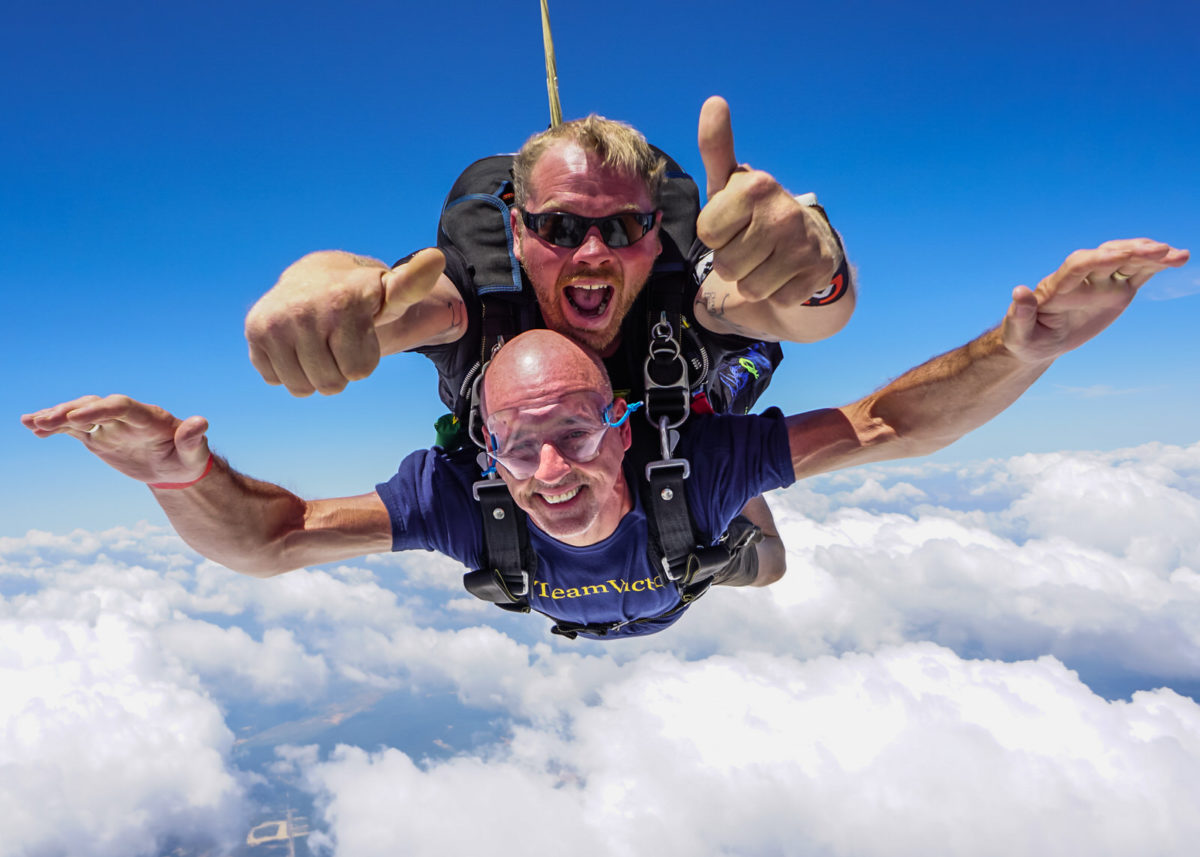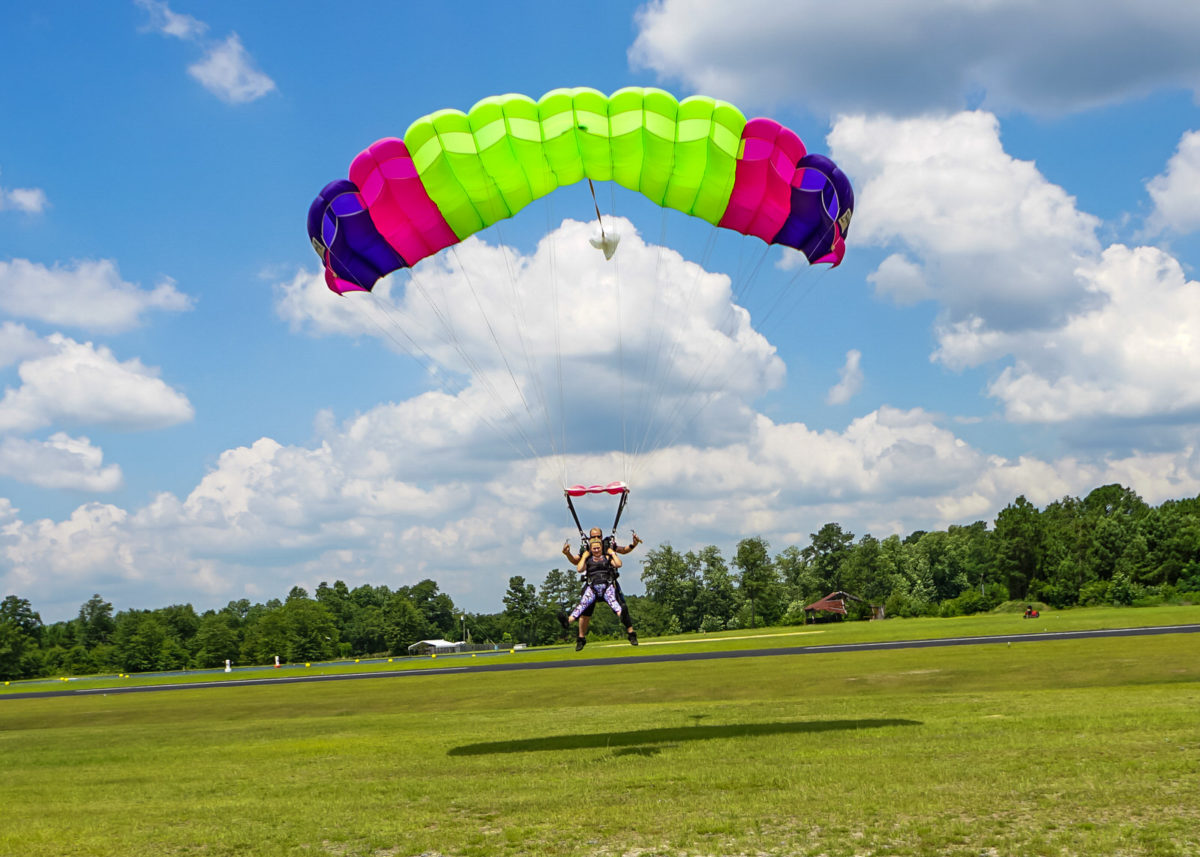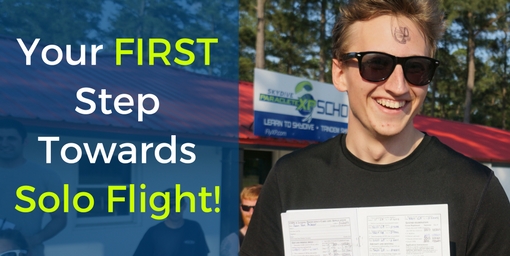Why Are There Weight Limits for Skydiving?
Friday, March 25, 2022
- Team FlyXP
- 3/25/22
- 0
- General
As you begin to look into skydiving for the first time, you might wonder: are there weight limits for skydiving? The answer is yes. Generally, there is not a weight minimum for skydiving*. However, federally-established orders mandate maximum weight limits for skydiving for safety reasons. Weight limits for skydiving vary from facility to facility–though, typically, the upper limit is around 230 lbs.
* As you will read below in the section “Why are there weight limits for skydiving?”, proper harness fit is important, and the ability of the harness to be fastened securely is required for guests on the smaller end of the spectrum as well.
Weight Limits at Skydive Paraclete XP
At Skydive Paraclete XP, the tandem skydiving weight limit is 230 lbs. For individuals between 230 lbs and 250 lbs, a $20 surcharge is applied and paid directly to the instructor. This charge is not intended to discriminate against or shame anyone. Rather, the charge is applied because of the additional physical toll it takes on the instructor who takes a participant within that weight range on a skydive.
Generally, 250 lbs is a hard-and-fast maximum tandem skydiving weight. Rarely, exemptions can be made by the instructor, who will determine if an individual over 250 lbs can be taken without exceeding safety parameters. For the Paraclete Student Program, the weight limit is 250 lbs – no exceptions.
Why are there weight limits for skydiving?
There are three primary reasons there are weight limits for skydiving.
1. Parachutes Have Weight Limits
The parachutes and harnesses used for skydiving undergo rigorous testing from the Federal Aviation Administration. Once this testing is complete, the equipment is issued a Technical Standard Order (TSO). This TSO outlines several operational parameters for the tested equipment including a maximum amount of weight that the parachute and equipment can bear.
For tandem skydiving, the weight that the skydiving system can hold includes the instructor, the student, and the equipment itself. As the weight load beneath a parachute goes up, it:
- Puts greater strain on the gear
- Becomes more difficult to steer, and
- Requires a greater energy output to land
In order to maintain the proper weight/equipment ratio, as the weight of the tandem student increases, the weight of the instructor must decrease. As you can imagine, it would be incredibly difficult for a 150 lb instructor to steer and control the parachute with someone twice their size attached to them.
Exceeding the weight limit can put both the instructor and the tandem student at risk. Overloaded parachutes deployed at terminal velocity increase the chance of a “hard” opening. This excessive snatch force could even cause the parachute to rip. Additionally, overloaded parachutes simply do not fly as well, and a tandem pair over the weight limit is at risk for a more difficult and dangerous landing.

2. Harnesses Fit Is Critical
The tandem student is attached to the instructor and rig via four attachment points on the skydiving harness. Because of the role the harness plays in securing the tandem student to the instructor, it is important that the harness fits properly. While tandem skydiving harnesses are adjustable and can fit a range of body types, there are limits. Even if an individual is within the weight limits, if they are not height/weight proportionate and the skydiving harness does not adequately fit, they may be precluded from jumping.
3. Physical Strength Needed for Landing
A typical parachute landing for a tandem skydive requires the student to lift their legs in front of their body at about a 90-degree angle and to hold the position for about 10 seconds. This position minimizes the likelihood that the feet or ankles will touch down first and instead the tandem skydiving pair will land by “sliding in”. The logic behind this type of landing is to avoid straining the lower limbs or tweaking an ankle or knee.

While lifting the legs perpendicular to the body may sound easy enough, it does require some core strength and some individuals may find this position difficult to maintain. While this is not true for everyone outside of the weight limit, we have found that it is more common in individuals who are not height/weight proportionate.
—
We’ve covered the more general considerations for the skydiving weight limit above, but if you have any further questions about your ability to skydive with us, reach out – we are here to help! If you have medical concerns, please consult with your doctor before making your booking.
Copyright © 2025, Skydive Paraclete XP, All Rights Reserved.
DropZone Web Design & Marketing by Beyond Marketing, LLC
